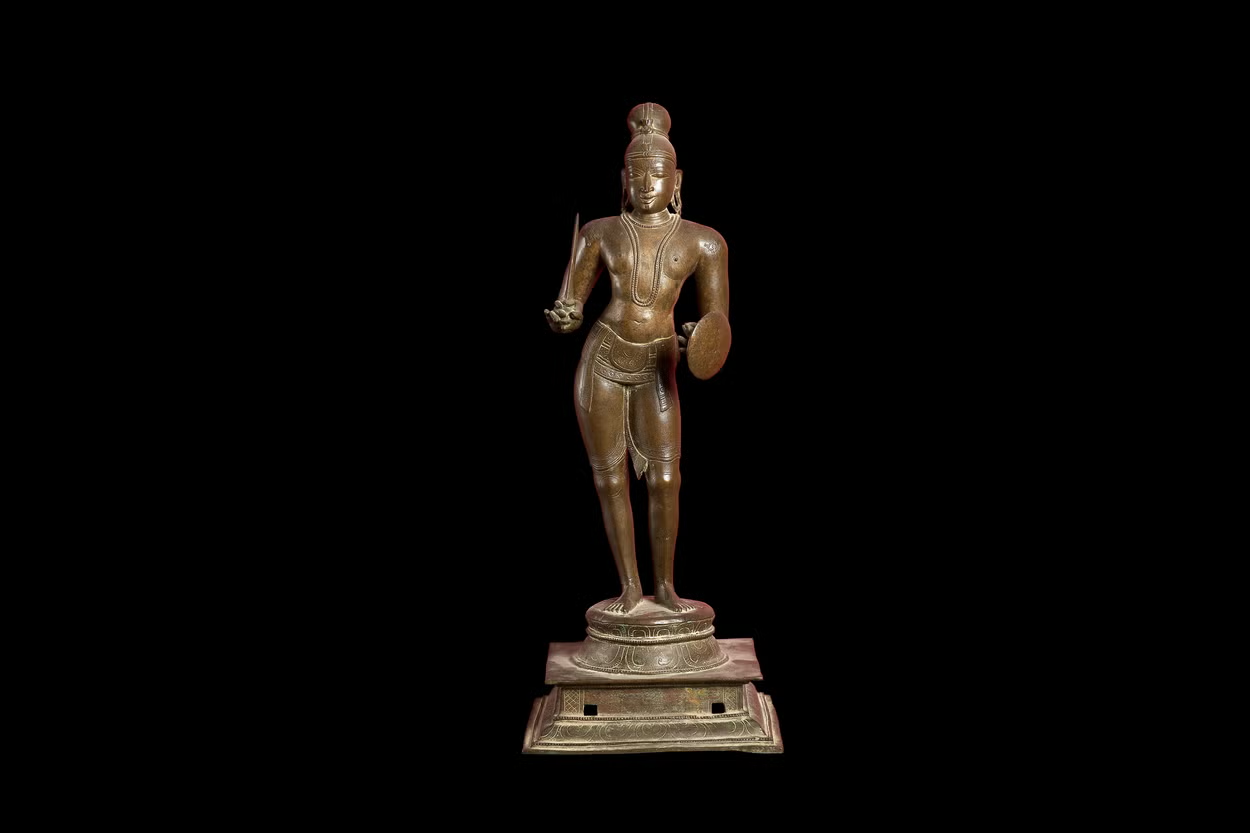The bronze statue of Saint Tirumankai Alvar was acquired by the Ashmolean Museum at the University of Oxford in 1967 and will soon be returned to India. The museum said that it has sent an appeal to the Charity Commission seeking the return of the stolen statue and is awaiting their approval.
A statement issued by the university said, “On 11 March 2024 the Council of the University of Oxford supported a claim from the Indian High Commission for the return of a 16th-century bronze sculpture of Saint Tirumankai Alvar from the Ashmolean Museum. This decision will now be submitted to the Charity Commission for approval.” However, The University of Oxford said it is not aware when the Charity Commission will make its decision.
500-year-old stolen bronze statue
The bronze statue depicts Tirumankai Alvar, one of the Tamil poet-saints of south India, holding a sword and shield. The celebrated poet-saint lived between the 8th and 9th centuries. Tirumankai Alvar once lived an outcast life as a bandit. After converting to the Vaishnava tradition of Hinduism, he changed his life around and went on to become a military commander and chieftain. The statue was acquired by the museum through an auction at Sotheby House in 1967.
According to the Sotheby’s catalogue, the bronze was sold by a private collector, J R Belmont (1886-1981). The Ashmolean does not know how the bronze entered Belmont’s collection.
Journey of the bronze
The issue of the stolen bronze statue came into the limelight in 2019. An independent scholar brought new research to the attention of the Ashmolean Museum regarding the 60 cm tall bronze statue from India.
Research in the photo archives of the Institut Français de Pondichéry and the École française d’Extrême-Orient (IFP-EFEO) revealed that the same bronze statue was present in the Shri Soundarrajaperumal Kovil temple in Tamil Nadu in 1957. The Ashmolean Museum was notified that this bronze is among several objects in European and American collections identified by this researcher using the IFP-EFEO archive.
Ashmolean Museum informed the Indian High Commission in December 2019 despite no registered claims against the object. Furthermore, the museum requested the assistance of the high commission to establish the object’s provenance.
Rahul Nangare, the first secretary of the Indian High Commission in London, stated that they had received a report from the Tamil Nadu police indicating that the original idol had been stolen and replaced with a fake one. The stolen idol is the same one currently held by the Ashmolean.
Following this investigation, the Indian High Commission made a formal request for restitution to the Ashmolean Museum in March 2020. However, the process of restitution was delayed due to the pandemic.
Four years after the request was made Ashmolean Museum and Oxford University announced their decision to return the stolen bronze item. However, as a charity, the Museum is required to submit the University Council’s support for repatriation to the Charity Commission. Only after the Commission has given approval can the statue be returned to India.
Future of the statue in India
Upon its return to India, it is not clear whether the statue will be returned to the temple in Tamil Nadu, placed in a museum or auctioned to private collectors.
In recent years, India has managed to bring back hundreds of stolen artefacts from various countries. In 2021, the USA handed over 157 artefacts to India. Between 2014 and 2018 India also brought back objects from Canada, Australia, Germany and Singapore. All the artefacts are under the guardianship of the Archaeological Survey of India (ASI).
However, most of these artefacts are still stored in depositories out of the public eye. ASI has time and again faced criticism over the storage of these artefacts in ill-equipped depots, most lacking climate-control facilities.
It is time ASI has comprehensive policies for the returned artefacts and allows them to be a part of the public sphere in a timely manner. After all, it is the collective heritage of the country and deserves to be celebrated in the same.
